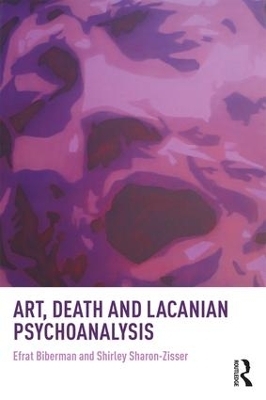
Art, Death and Lacanian Psychoanalysis
Routledge (Verlag)
978-1-138-04404-3 (ISBN)
Freud’s treatment of death focuses not on the moment of biological extinction but on the recurrent moments in life which he called "the death drive" or the "compulsion to repeat": the return precisely of what is most unbearable for the subject. Surprisingly, in some of its manifestations, this painful repetition turns out to be invigorating. It is this invigorating repetition that is the main concern of this book, which demonstrates the presence of its manifestations in painting and literature and in the theoretical discourse concerning them from the dawn of Western culture to the present.
After unfolding the psychoanalytical and philosophical underpinnings for the return of the death drive as invigorating repetition in the sphere of the arts, the authors examine various aspects of this repetition through the works of Gerhard Richter, Jeff Wall, and contemporary Israeli artists Deganit Berest and Yitzhak Livneh, as well as through the writings of Virginia Woolf and James Joyce.
First to articulate the stimulating aspect of the death drive in its relation to the arts and the conception of art as a varied repetition beyond a limit, Art, Death and Lacanian Psychoanalysis will be indispensable to psychoanalysts, scholars of art theory and aesthetics and those studying at the intersection of art and psychoanalysis.
Efrat Biberman is an Associate Professor at Hamidrasha Faculty of Arts, Beit Berl College, Israel. Her fields of interest are theory and philosophy of art from a Freudian-Lacanian perspective. She is the author of Visual Text(a)iles: Narrative and Gaze in Painting (2009, in Hebrew). Shirley Sharon-Zisser practices psychoanalysis in Tel Aviv, Israel. She is a member of the World Association of Psychoanalysis (AMP) and an Associate Professor of English at Tel Aviv University. Her work focuses on the interrelations between rhetorical theory and Lacanian psychoanalysis. Her publications include The Risks of Simile in Renaissance Rhetoric (2001), Critical Essays on Shakespeare’s "A Lover’s Complaint": Suffering Ecstasy (2005, ed.) and Lacanian Interpretations of Shakespeare (2009, ed.).
Prologue: re-hearse
Introduction
1 Beyond the art principle
2 What never stops dying
Art as philo(soph)y
3 On the artwork as cedable object
Autobiography or automortography
Inscribing the body/inscribing life?
Inscribing the body/inscribing death
The self-portrait as cedable object
4 Writing their deaths: James Joyce and Virginia Woolf
5 The art of inters(l)aying: the inscription of death as stylistic form
Witticism and death
Death and the maiden
6 Between two deaths: the case of photo-painting
Between two deaths
Between concealment and hole: two mediumal means of the presence of the death drive in visual art
Between painting and photography
Photo-painting: the case of Gerhard Richter
Buchloh and Osborne on the representation of death in Richter’s works
Photo-painting between two deaths
Epilogue: on painting and death
Bibliography
Index
| Erscheinungsdatum | 06.10.2017 |
|---|---|
| Zusatzinfo | 37 Halftones, black and white; 37 Illustrations, black and white |
| Verlagsort | London |
| Sprache | englisch |
| Maße | 156 x 234 mm |
| Gewicht | 273 g |
| Themenwelt | Kunst / Musik / Theater ► Kunstgeschichte / Kunststile |
| Geisteswissenschaften ► Philosophie | |
| Geisteswissenschaften ► Psychologie ► Psychoanalyse / Tiefenpsychologie | |
| ISBN-10 | 1-138-04404-0 / 1138044040 |
| ISBN-13 | 978-1-138-04404-3 / 9781138044043 |
| Zustand | Neuware |
| Haben Sie eine Frage zum Produkt? |
aus dem Bereich


